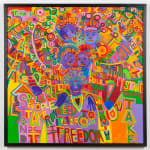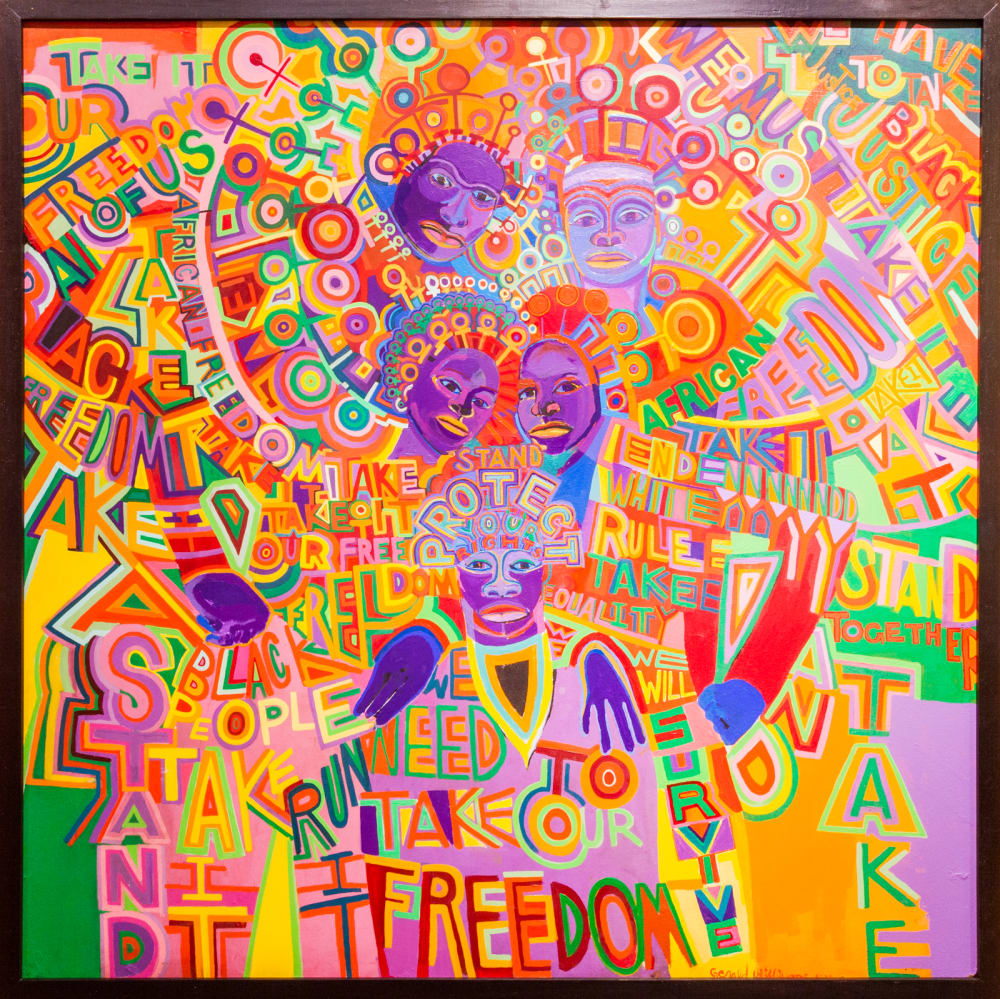 Back of painting
Back of painting
Gerald Williams USA, b. 1941
127 x 127 x 6.3 cm
Further images
-
(View a larger image of thumbnail 1
)

-
(View a larger image of thumbnail 2
)

-
(View a larger image of thumbnail 3
)

-
(View a larger image of thumbnail 4
)

-
(View a larger image of thumbnail 5
)

-
(View a larger image of thumbnail 6
)

-
(View a larger image of thumbnail 7
)

-
(View a larger image of thumbnail 8
)

-
(View a larger image of thumbnail 9
)

The text within the composition includes a series of direct messages relating to the Black Power Movement, including: “Protect Your Rights,” “End White Rule,” “Stand Together,” and “Take Our Freedom,” from which the painting pulls its title. Williams made this painting during the height of Apartheid in South Africa, in what historians might argue was the aftermath of the Civil Rights Movement. However, aside from the technicality that a Civil Rights Bill had been passed, and that various other influential public milestones had been reached that made it seem as though America might be starting to live up to its foundational ideas of equality for all, the lived experience of most Black Americans was that prejudice and racial injustice were still as prevalent as ever.
Taken in context with the time it was painted, this work shows how massively important community solidarity was to AFRICOBRA. The phrases “Stand Together” and “Protect Your Rights” speak directly to the lesson that marginalized peoples continue to learn and relearn today, that there is strength in community, and that rights, once gained, can never be taken for granted. Aesthetically, Take It demonstrates the masterful ability Williams has to distill the visual language of time, place, culture and identity into an expression of the essence of reality. While he was a member of AFRICOBRA, Williams continually engaged in ongoing conversations with the group about how best to express their environment, their culture, and their moment in history. When Williams later traveled and worked in Africa, he continued that practice of aesthetic distillation, while also opening himself up to new techniques, materials and processes. The quiet nights in Nairobi; the rich colors of African clothing and architecture; the dynamic rhythms of life in the country and the city: all of these things transformed his aesthetic approach, and set him on a new path toward the polyrhythmic aesthetic he maintains today, which reflects his global vision of the human condition, and which is already perceptible in this key historic work.
Provenance
The Artist's studio, Chicago, IL, USAKavi Gupta gallery, Chicago, IL, USA
Exhibitions
Africobra: Nation Time, 2019, La Biennale di Venezia, Venice, ItalySoul of a Nation: Art in the Age of Black Power, 2020, Museum of Fine Art, Houston, TX, USA








